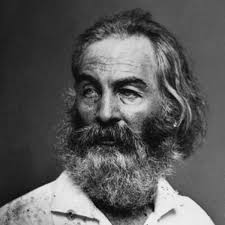
Walt Whitman
When Abraham Lincoln (1809-1865) was elected President in 1860, seven slave states left the Union to form the Confederate States of America, and four more joined when hostilities began between the North and South. The American Civil War lasted for more than four years, and Lincoln led the nation through its greatest moral, constitutional, and political crisis. His famous Emancipation Proclamation, which freed all slaves within the Confederacy changed the war from a battle to preserve the Union into a battle for freedom. Once the war was over, he felt that it was crucial to reunite the Union and to bring the Confederacy back into one United States, but an assassin’s bullet killed Lincoln less than a week after the surrender of Confederate forces. Within days of his death, Lincoln was portrayed to a worshipping public as the liberator of the slaves, the savior of the Union who had given his life so that others could be free. He was compared to Jesus Christ and Father Abraham, a mythological lawgiver. Lincoln’s assassination also inspired Walt Whitman to pen a long poem in the form of a pastoral elegy.
When lilacs last in the door-yard bloom’d,
And the great star early droop’d
In the western sky in the night.
I mourn’d, and yet shall mourn
With ever returning spring.
Ever-returning spring.
Trinity sure to me you bring.
Lilac blooming perennial
And drooping star in the west.
And thought of him I love.
Steve Dobrogosz: When Lilacs Last in the Dooryard Bloom’d – Part 1 (Steve Dobrogosz, piano; Uppsala Chamber Orchestra; Gary Graden, cond.)

Abraham Lincoln, 1863
Although Whitman’s poem was ignited by tragedy, the poet neither mentions Lincoln by name nor discusses the circumstances of his death. Instead, Whitman refracts a full spectrum of light through the prism of Lincoln’s death and funeral. “I remember,” he writes, “where I was stopping at the time, the season being advanced, there were many lilacs in full bloom. By one of those caprices that enter and give tinge to events without being at all a part of them, I find myself always reminded of great tragedy of that day by the sight and odor of these blossoms. It never fails.”
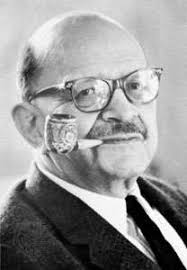
Roger Sessions
As such, he uses a series of rural and natural imagery including the symbols of the lilacs, a drooping star in the western sky (Venus), and the hermit thrush, and employs the traditional progression of the pastoral elegy in moving from grief toward an acceptance and knowledge of death. “Lilacs” is a unique and penetrating meditation on the elusive insight Whitman calls “the knowledge of death.” Whitman constructs a cathedral of words around the spirit of the man, who, through the ravages of war, kept a young nation alive at the cost of his own life.
O Powerful western fallen star!
O shades of night—O moody, tearful night!
O great star disappear’d—O the black murk that hides the star!
O cruel hand that hold me powerless—O helpless soul of me!
O harsh surrounding cloud that will not free my soul.
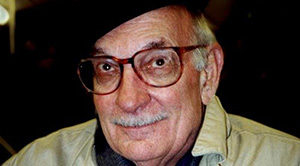
George Crumb
Georg Crumb’s song cycle Apparition: Elegiac Songs and Vocalises for Soprano and Amplified Piano dates from 1979. By taking the well-known text from Whitman’s elegy, Crumb is “free to play upon the common knowledge of that text and to elaborate on various aspects of it.” He chooses to set only specific portions of the text that revolves around the acceptance of death and its role in the cosmic cycle of events.
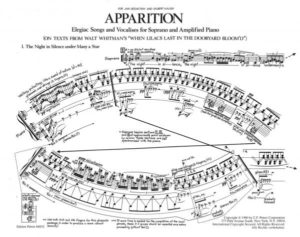
Score of George Crumb’s Apparition
Crumb was drawn to the text and what it implied about the power of music, and seemingly, he had been thinking about these words for a very long time. “He was first inspired when he was growing up in West Virginia, and he returned to the poem throughout struggling to find the ideal musical expression.” Crumb intensifies the musical qualities of the language, and his story begins and ends in a mysterious place. The singer takes the part of the hermit thrush, the small songbird that “serves as an oracle throughout.”
George Crumb: Apparition – II. When Lilacs Last in the Dooryard Bloom’d (Christine Schäfer, soprano; Eric Schneider, piano)
In the swamp in secluded recesses,
A shy and hidden bird is warbling a song.
Solitary the thrush,
The hermit withdrawn to himself, avoiding the settlements,
Sings by himself a song.
Song of the bleeding throat,
Death’s outlet song of life, (for well dear brother I know,
If thou wast not granted to sing thou would’st surely die.)
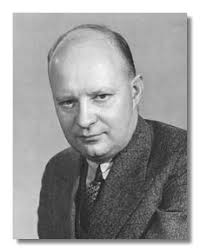
Paul Hindemith
In 1919, Paul Hindemith (1895-1963) set three poems by Walt Whitman as songs with piano accompaniment. Triggered by the death of President Roosevelt in April 1945 and the end of World War II immediately thereafter, Hindemith set to work on a Requiem based on Whitman’s poem “When Lilacs Last in the Door-yard Bloom’d.” Contemplating on the sorrows and the joys of life, Hindemith set 12 of Whitman’s 16 sections. At the center of his music-dramatic structure is the song of the bird. Hindemith weaves this image through his music like a thread, eventually elevating the bird into the song of the artist. As a critical observer stated, “Hindemith formulates a kind of hymn to America—his new home—an ode to the plentifulness and beauties of this country.”
Paul Hindemith: Requiem, “When lilacs last in the door-yard bloom’d” – Prelude (Dietrich Fischer-Dieskau, baritone; Vienna State Opera Chorus; Vienne Symphony Orchestra; Wolfgang Sawallisch, cond.)




